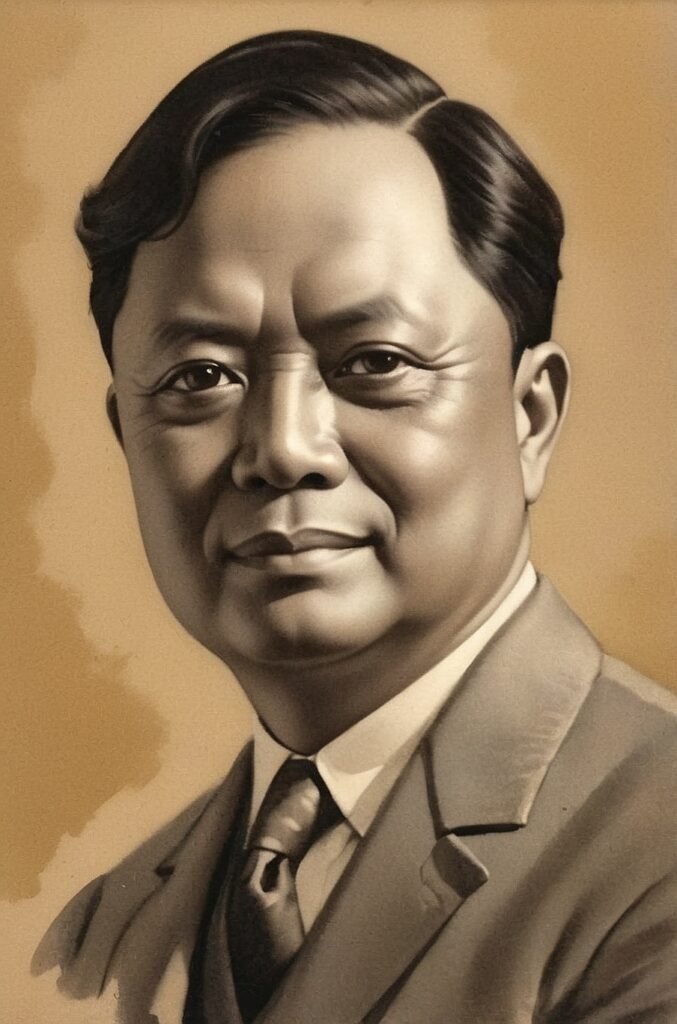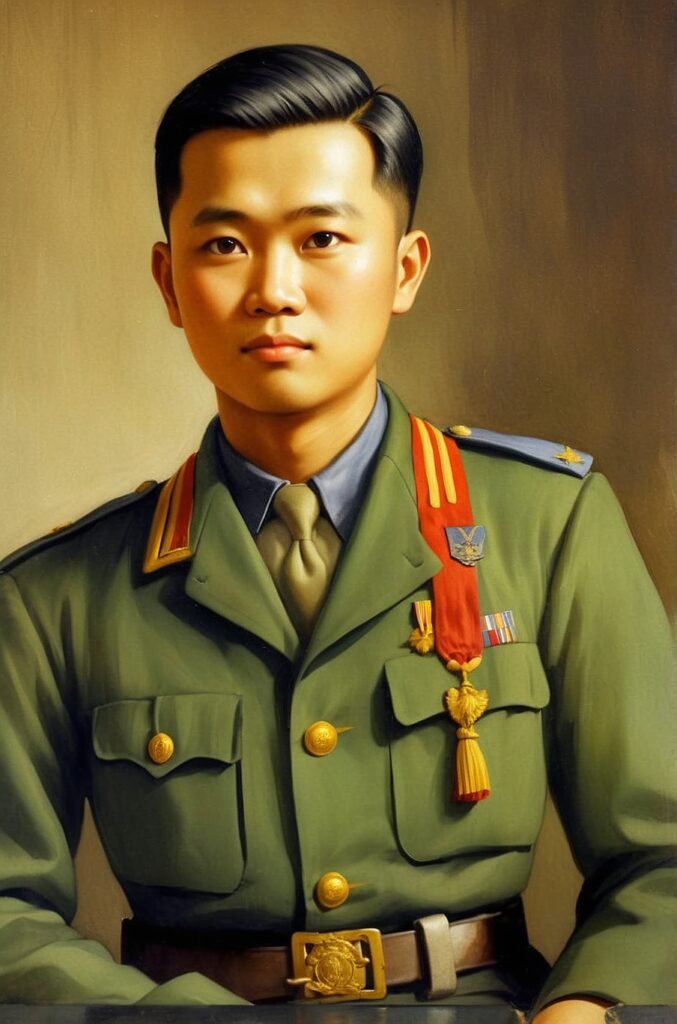José Abad Santos stands as a towering figure in Philippine history, embodying unwavering patriotism and judicial integrity during one of the nation’s darkest hours. As the Chief Justice of the Supreme Court of the Philippines during World War II, Abad Santos faced extraordinary challenges that would ultimately lead to his untimely demise at the hands of Japanese forces. This blog post delves into the life, career, and legacy of this remarkable jurist, exploring his contributions to Philippine jurisprudence and his ultimate sacrifice for his country’s sovereignty.
Early Life and Education
Birth and Family Background
José Abad Santos was born on February 19, 1886, in San Fernando, Pampanga, to Vicente Abad Santos and Toribia Basco. He was the third of ten children in a family that would later produce several notable figures in Philippine society. The Abad Santos family was known for their intellectual pursuits and commitment to public service, values that would profoundly shape José’s future path.
Educational Journey
Abad Santos’ educational journey was marked by excellence from an early age. He began his formal education in his hometown of San Fernando before moving to Manila to continue his studies. His academic prowess was evident, and he quickly distinguished himself among his peers. The young Abad Santos’ thirst for knowledge and dedication to his studies set the foundation for his future achievements.
After completing his secondary education, Abad Santos pursued higher learning with remarkable vigor. He enrolled at the Escuela de Derecho, the law school of the University of Santo Tomas, where he immersed himself in the study of jurisprudence. His time at the university was characterized by intense focus and academic success, foreshadowing his future role in shaping Philippine law.
Overseas Education and Influences
Recognizing the value of a global perspective, Abad Santos sought to broaden his horizons through international education. In 1907, he traveled to the United States as a pensionado, or government scholar, under the American colonial administration. This opportunity allowed him to study at prestigious institutions, including Northwestern University and George Washington University.
During his time in the United States, Abad Santos was exposed to new ideas and legal philosophies that would later influence his approach to jurisprudence in the Philippines. He absorbed the principles of American constitutional law and democratic governance, concepts that would prove invaluable in his future roles as a jurist and public servant.
Rise to Prominence
Early Career in Law and Government
Upon returning to the Philippines in 1909, José Abad Santos embarked on a career that would see him rise rapidly through the ranks of the legal profession and government service. His exceptional legal acumen and dedication to public service quickly caught the attention of his superiors and colleagues.
Key Positions Held:
- Assistant Attorney in the Bureau of Justice (1910)
- Chief of the Division of Investigation, Executive Bureau (1917)
- Auxiliary Justice of the Supreme Court (1919)
- Secretary of Justice (1922-1923)
- Associate Justice of the Supreme Court (1932)
Each of these positions provided Abad Santos with valuable experience and insights into the Philippine legal system and governance. His reputation for integrity, intelligence, and fairness grew with each role he undertook.
Contributions to Philippine Jurisprudence
Throughout his career, José Abad Santos made significant contributions to Philippine jurisprudence. His legal opinions and decisions were characterized by their clarity, depth of analysis, and commitment to upholding the rule of law. Abad Santos was known for his ability to navigate complex legal issues while remaining true to constitutional principles.
Some of his notable contributions include:
- Strengthening the independence of the judiciary
- Advancing civil liberties and due process
- Clarifying the separation of powers between branches of government
- Interpreting and applying international law in the Philippine context
These contributions helped shape the legal landscape of the Philippines and set important precedents that would influence future generations of jurists.
Appointment as Chief Justice
Circumstances of Appointment
José Abad Santos’ appointment as Chief Justice of the Supreme Court of the Philippines came at a critical juncture in the nation’s history. On December 24, 1941, just weeks after the Japanese attack on Pearl Harbor and the subsequent invasion of the Philippines, President Manuel L. Quezon appointed Abad Santos to the highest judicial position in the land.
This appointment was a testament to Abad Santos’ reputation for integrity, legal expertise, and unwavering commitment to the rule of law. President Quezon recognized that in the face of imminent foreign occupation, the Philippines needed a Chief Justice who could navigate the treacherous waters of wartime governance while upholding the principles of justice and national sovereignty.
Challenges Faced as Chief Justice
Abad Santos assumed the role of Chief Justice under extraordinarily difficult circumstances. The Japanese invasion had thrown the country into turmoil, and the Philippine government was forced to relocate to Corregidor and later to the United States. As Chief Justice, Abad Santos faced numerous challenges:
- Maintaining the functionality of the judiciary during wartime
- Upholding the rule of law in the face of foreign occupation
- Protecting the rights and liberties of Filipino citizens
- Navigating the complex legal issues arising from the occupation
Despite these formidable obstacles, Abad Santos remained steadfast in his commitment to justice and the Philippine Constitution. He worked tirelessly to ensure that the principles of law and order were maintained to the greatest extent possible under the circumstances.
World War II and Japanese Occupation
Initial Response to Japanese Invasion
When the Japanese forces launched their invasion of the Philippines in December 1941, the country was thrust into a state of crisis. As Chief Justice, José Abad Santos played a crucial role in the government’s response to this existential threat. He worked closely with President Quezon and other government officials to formulate legal and constitutional responses to the unfolding emergency.
Abad Santos’ primary concern was to ensure that the government’s actions remained within the bounds of the law, even as it took extraordinary measures to defend the nation. He provided legal counsel on issues such as the declaration of martial law, the delegation of emergency powers, and the preservation of constitutional governance in the face of enemy occupation.
Government in Exile
As the Japanese forces advanced, the Philippine government was forced to evacuate. President Quezon, along with key members of his cabinet and military leaders, relocated first to Corregidor and then to Australia before eventually establishing a government-in-exile in the United States. During this tumultuous period, Abad Santos was faced with a critical decision.
President Quezon requested that Abad Santos join the government-in-exile, recognizing the importance of having the Chief Justice’s legal expertise and moral authority as part of the exiled administration. However, Abad Santos made the fateful decision to remain in the Philippines. He believed that his duty lay with the Filipino people who would be living under Japanese occupation, and he felt that he could best serve his country by staying behind.
Decision to Remain in the Philippines
José Abad Santos’ decision to stay in the Philippines was a reflection of his deep sense of duty and patriotism. He understood the risks involved but believed that his presence could provide some measure of stability and legal continuity for the Filipino people during the occupation.
Abad Santos’ reasoning for staying can be summarized in the following table:
| Reasons for Staying | Potential Impact |
|---|---|
| Provide legal guidance to local authorities | Maintain some semblance of rule of law |
| Offer moral support to the Filipino people | Boost morale and resistance spirit |
| Ensure continuity of the judiciary | Protect citizens’ rights where possible |
| Resist collaboration with occupying forces | Demonstrate patriotic resolve |
This decision would ultimately lead to Abad Santos’ confrontation with the Japanese authorities and set the stage for his final act of defiance.
Confrontation with Japanese Authorities
Capture by Japanese Forces
In April 1942, as the Japanese consolidation of power in the Philippines continued, José Abad Santos was captured by enemy forces in Cebu. At the time of his capture, he was traveling with his son José Jr. and other government officials. The Japanese military quickly recognized the significance of their captive, given Abad Santos’ high-ranking position in the Philippine government.
Interrogation and Demands
Following his capture, Abad Santos was subjected to intense interrogation by Japanese military officials. The primary demand made of him was to swear allegiance to the Japanese Empire and to use his influence as Chief Justice to encourage cooperation with the occupation authorities. This demand placed Abad Santos in an impossible position, forcing him to choose between his personal safety and his loyalty to the Philippines.
The Japanese believed that securing the cooperation of such a prominent figure would lend legitimacy to their occupation and help quell resistance among the Filipino population. They likely underestimated the depth of Abad Santos’ commitment to Philippine sovereignty and his unwillingness to compromise his principles.
Abad Santos’ Refusal and Final Words
Despite the immense pressure and the clear threat to his life, José Abad Santos steadfastly refused to comply with the Japanese demands. His response to his captors was a powerful affirmation of his loyalty to the Philippines and his commitment to the principles he had sworn to uphold as Chief Justice.
Abad Santos’ final conversation with his son José Jr. has become an iconic moment in Philippine history, encapsulating his unwavering patriotism and courage in the face of certain death. According to accounts, he told his son:
“Do not cry, José, show to these people that you are brave. It is an honor to die for one’s country. Not everybody has that chance.”
These words, spoken in the shadow of impending execution, reveal the depth of Abad Santos’ conviction and his belief in the ultimate value of sacrificing oneself for the greater good of the nation.
Execution and Martyrdom
Circumstances of Execution
Following his refusal to cooperate with the Japanese occupation forces, José Abad Santos’ fate was sealed. On May 2, 1942, in Malabang, Lanao (now part of Lanao del Sur), Abad Santos was executed by Japanese soldiers. The execution was carried out by firing squad, a common method used by occupying forces for those deemed to be enemies of the Empire.
The decision to execute such a high-ranking official as the Chief Justice of the Supreme Court was a clear message from the Japanese authorities. It demonstrated their ruthlessness in dealing with resistance and their determination to break the will of the Filipino people, particularly those in positions of influence who refused to collaborate.
Impact on Filipino Morale
The news of José Abad Santos’ execution, while initially suppressed by the Japanese, eventually spread throughout the Philippines. The impact on Filipino morale was profound and multifaceted:
- Symbol of Resistance: Abad Santos’ refusal to collaborate, even in the face of death, became a powerful symbol of Filipino resistance to the occupation.
- Inspiration for the Underground: His martyrdom inspired many Filipinos to join or support the underground resistance movement.
- National Unity: The execution of such a respected figure united Filipinos from various backgrounds in their opposition to the Japanese occupation.
- Moral Authority: Abad Santos’ sacrifice lent moral authority to the Philippine government-in-exile and to the eventual return of constitutional governance after the war.
To illustrate the impact of Abad Santos’ martyrdom on Filipino resistance, consider the following graph showing the estimated growth of the resistance movement in the months following his execution:
graph TD
A[May 1942: Abad Santos Executed] --> B[June 1942: Initial Surge in Resistance]
B --> C[July 1942: Continued Growth]
C --> D[August 1942: Expansion of Underground Networks]
D --> E[September 1942: Increased Guerrilla Activities]
E --> F[October 1942: Widespread Resistance Movement]
style A fill:#f9d5e5,stroke:#333,stroke-width:2px
style B fill:#eeac99,stroke:#333,stroke-width:2px
style C fill:#e06377,stroke:#333,stroke-width:2px
style D fill:#c83349,stroke:#333,stroke-width:2px
style E fill:#5b9aa0,stroke:#333,stroke-width:2px
style F fill:#d6e1c7,stroke:#333,stroke-width:2pxThis graph represents a conceptual visualization of the growth in resistance activities following Abad Santos’ execution, based on historical accounts and estimates. While exact numbers are difficult to determine due to the clandestine nature of resistance movements, the trend illustrates the galvanizing effect of Abad Santos’ martyrdom on the Filipino people’s resolve to resist the occupation.
Legacy and Commemoration
Immediate Aftermath
In the immediate aftermath of World War II, the story of José Abad Santos’ sacrifice began to emerge as a powerful narrative of Filipino resistance and patriotism. As the Philippines rebuilt itself following the devastation of the war, Abad Santos’ legacy served as a source of inspiration and a reminder of the values that the nation sought to uphold in its postwar reconstruction.
Official Recognition
The Philippine government has taken numerous steps to officially recognize and commemorate the life and sacrifice of José Abad Santos:
- National Hero Status: Abad Santos was officially recognized as a national hero of the Philippines, placing him among the country’s most revered historical figures.
- Naming of Public Spaces: Various streets, schools, and public buildings across the Philippines have been named in honor of José Abad Santos.
- Inclusion in Educational Curriculum: The story of Abad Santos’ life and martyrdom has been incorporated into Philippine history textbooks, ensuring that future generations learn about his contributions and sacrifice.
- Commemorative Stamps: The Philippine Postal Corporation has issued stamps featuring José Abad Santos, further cementing his place in the national consciousness.
- Annual Commemorations: Official ceremonies are held annually to mark the anniversary of Abad Santos’ execution, often attended by high-ranking government officials and members of the judiciary.
Cultural Impact
Beyond official recognition, José Abad Santos has left a lasting impact on Philippine culture:
- Literary Works: Numerous books, poems, and plays have been written about Abad Santos, exploring his life, principles, and the circumstances of his martyrdom.
- Film and Television: Documentaries and dramatizations of Abad Santos’ story have been produced, bringing his legacy to a wider audience.
- Legal Education: Law schools in the Philippines often cite Abad Santos as an exemplar of judicial integrity and patriotism, inspiring future generations of legal professionals.
- Popular Culture: References to Abad Santos and his famous last words can be found in various forms of popular media, indicating the enduring nature of his legacy.
Continuing Relevance
The legacy of José Abad Santos continues to resonate in contemporary Philippine society:
- Symbol of Judicial Independence: Abad Santos’ unwavering commitment to his principles serves as a constant reminder of the importance of maintaining an independent judiciary.
- Model of Public Service: His life story is often invoked as an example of selfless public service and dedication to one’s country.
- Inspiration for Anti-Corruption Efforts: In a country where corruption remains a significant challenge, Abad Santos’ integrity in the face of extreme pressure serves as an inspiration for those fighting against graft and corruption.
- Reminder of Historical Resilience: The story of Abad Santos reminds Filipinos of their nation’s resilience in the face of foreign occupation and the importance of safeguarding hard-won freedoms.
Conclusion
José Abad Santos’ life and death stand as a testament to the power of individual conviction and the enduring strength of national identity. As Chief Justice of the Supreme Court, he embodied the highest ideals of the Philippine judiciary, upholding the rule of law even in the most challenging circumstances. His refusal to collaborate with the Japanese occupation forces, culminating in his execution, elevated him from a respected jurist to a national martyr.
The legacy of José Abad Santos continues to inspire Filipinos across generations. His unwavering commitment to principles, even in the face of certain death, serves as a powerful reminder of the values that underpin Philippine democracy and sovereignty. As the Philippines faces new challenges in the 21st century, the example set by Abad Santos remains as relevant as ever, calling on citizens and leaders alike to prioritize national interest over personal gain and to stand firm in defense of democratic ideals.
In honoring the memory of José Abad Santos, we not only pay tribute to a great historical figure but also reaffirm our commitment to the principles for which he gave his life. His sacrifice continues to light the path for those who seek to serve their country with integrity, courage, and an unwavering dedication to justice.
Disclaimer: While every effort has been made to ensure the accuracy of the information presented in this blog post, historical accounts can sometimes vary. If you notice any inaccuracies or have additional information that could enhance this article, please report any inaccuracies so we can promptly make corrections.




